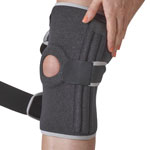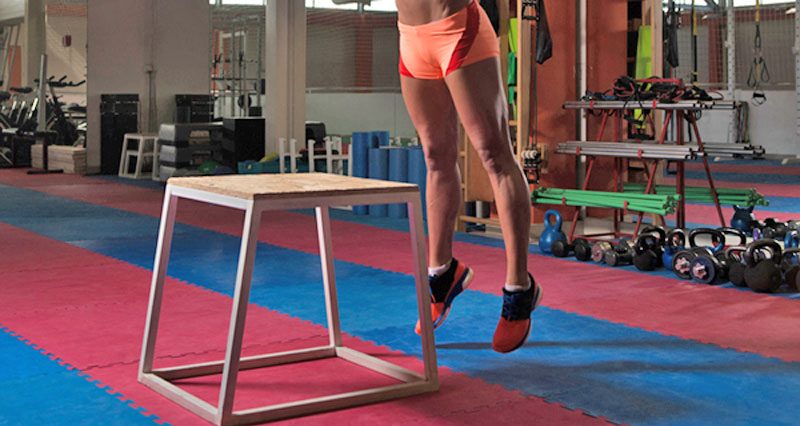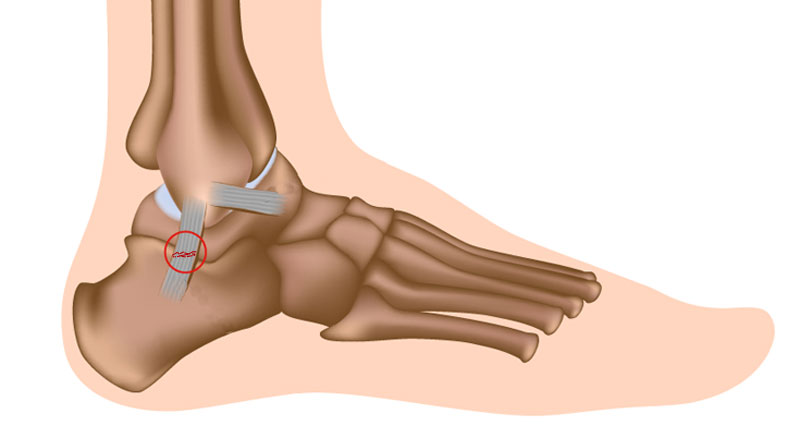Plyometrics or plyometric exercises are a form of strengthening exercise, incorporating jumping, bounding, and hopping movements, which work to increase power in the muscles. Power is used in the vast majority of all sports and so plyometrics can be used to help develop this for most athletes.
Here we outline some basic plyometric exercises used in the later stages of sports rehabilitation. Plyometrics is an advanced training technique, which should only be used by experienced athletes who have already developed basic strength.
What are Plyometric exercises?
- Plyometrics are hopping, jumping, and bounding-type exercises. They develop stronger, faster muscle contractions.
- A plyometric exercise involves an eccentric muscle contraction, immediately followed by a concentric contraction. This means the muscle contracts, while it is lengthening during the eccentric phase.
- For example, a common plyometric exercise is the depth jump. This involves jumping off a box, landing on both feet in a squatting position, before immediately jumping straight upwards.

Buy Knee Braces
Eccentric contractions
Eccentric contractions produce the maximum amount of force. Therefore, when a muscle contracts eccentrically, the maximum amount of energy is produced. The energy is stored by the elasticity of the muscle. A subsequent concentric contraction must occur as soon as possible to take full advantage of the stored energy in this stretch-shortening cycle.
Types of plyometric exercises
- Depth jumps and box drops are popular exercises. To work more on the forward motion, bounding and hopping are best.
- Plyometrics can also be used for improving power in the upper body. These often involve medicine balls which when caught require an eccentric contraction to control the motion, followed by a concentric contraction to throw the ball back.
- Push-ups with a clap can also be used. The downward phase of a push-up involves an eccentric contraction of the chest muscles, which is immediately followed by a strong concentric contraction to push back up and clap the hands.
What are the risks of plyometric training?
Plyometric training does carry a high injury risk because of its explosive nature. For this reason, athletes should first develop a base level of strength through a standard resistance programme.
Plyometric sessions should be performed a maximum of twice a week and not when you are tired from previous workouts. A thorough warm-up and cool-down will also help to prevent injuries, as will a gradual development of the intensity of the exercises performed. Delayed onset muscle soreness is a common complaint.
Functional & plyometric exercises
These functional or plyometric-type exercises can be performed later in the rehabilitation process. These strengthening exercises are more dynamic and prepare the muscles for when full training is resumed. They include explosive movements such as jumps that work the muscles in a similar way to full training such as sprinting.
Step back
Stepback exercises can be used as late-stage ankle exercises to increase push-off strength, but will also work the hip and bum muscles.
Teaching Points:
- Start standing on a small step.
- Take one leg backwards, touch the foot on the floor and push off with the forefoot to move it back onto the step.
- Alternate legs.
- This can be increased in difficulty by performing on a higher step or at a faster speed.
Muscles Worked:
- Gastrocnemius
- Soleus
Resistance band jumps
The resistance band jump exercise is a great late-stage proprioception test! Hops and jumps can be used in the early stages but using the band adds an extra challenge!
- A resistance band is wrapped around the waist and anchored or held behind the athlete.
- They then perform side-to-side or forward and backward jumps.
- The resistance from the band provides a challenge to the balance.
Hopping exercises
Hopping exercises are important in late-stage rehabilitation in lots of sports. They help to improve balance, proprioception, and explosive strength.
- Many variations on hopping exercises are available. Start with a small hop on the spot and gradually increase the height jump.
- Try hopping to the front, to the side, and backwards.
- Try hopping from one leg and landing on the other.
- Equipment such as hoops, agility ladders, and minim hurdles can all be used to add further challenges.
Box jumps
Box jumps are a form of advanced exercise called plyometrics. They strengthen the entire leg ready for powerful, explosive movements and also aid proprioception development.
Teaching Points:
- Numerous exercises can be created using a box or step to jump over.
- To start the athlete may jump sideways over the box, moving rapidly from one foot on one side to the other foot on the other side. This may also be performed front to back.
- A further progression is high jumps over the box, firstly landing on two feet and progressing to one.
Related Injuries:









